An isolated population in the river Cetina
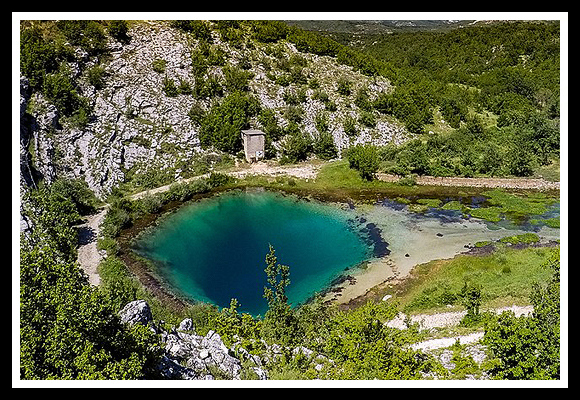
The Cetina river is located in Dalmatia. It takes its source on the northwestern slope of the Dinara mountain, near the bosnian boundary. The spring itself is a large perennial vauclusian emergence. – Original picture provided by ZovkoM for Wikimedia Commons – (CC BY-SA).
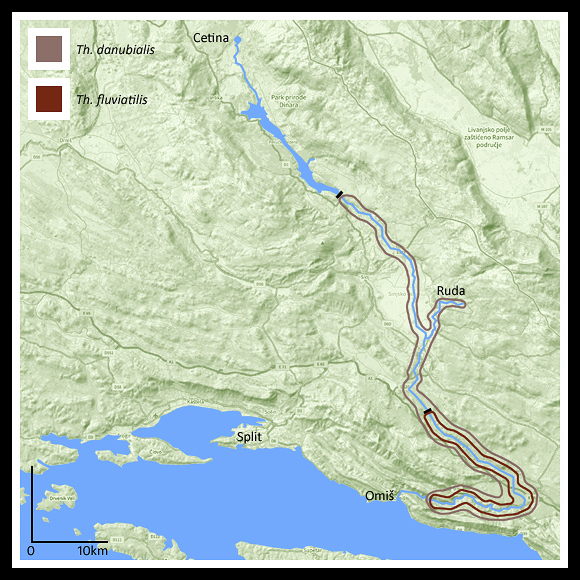
According to R. Crnković, who studies the rivers of Dalmatia, two species of Theodoxus live in the Cetina: Th. danubialis, from about Radman mills, just upstream Omiš, up to the dam of Peruča, and also in the Ruda tributary; and Th. fluviatilis, from Radman mills to the first dam of Pranjčevići, circa 35km upstream only. In the lower part of the river, both species live in syntopy. – Original layer of the terrain built after OpenStreetMap sources – (ODbL).
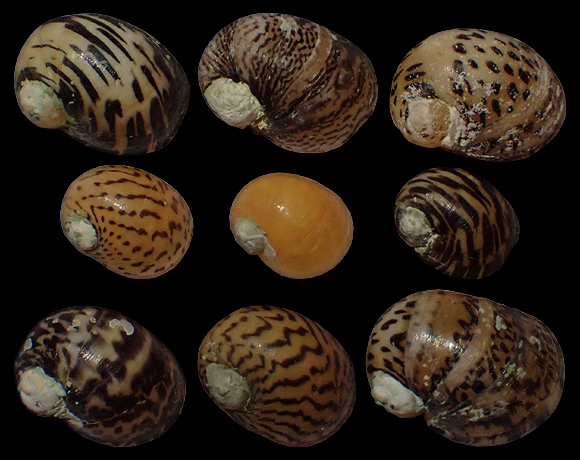
Original pictures provided by R. Crnković (HR).
– (CC BY-NC-SA) –
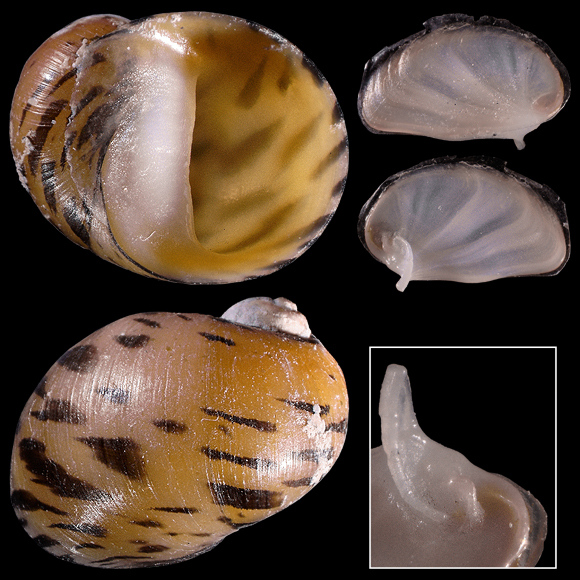
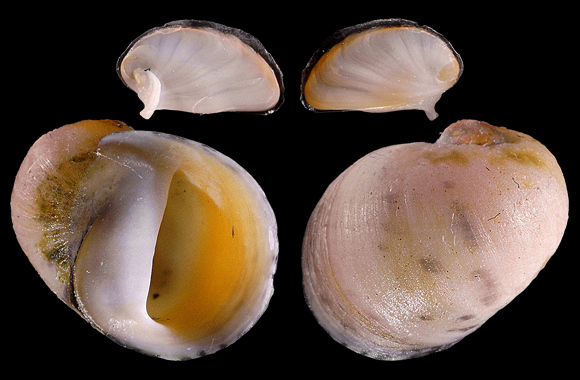
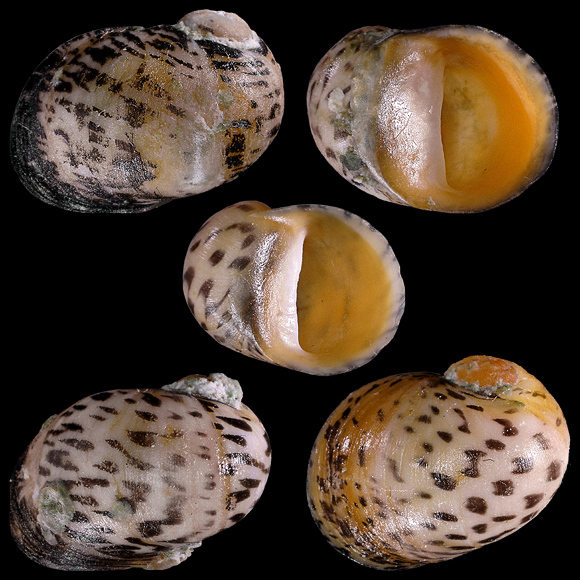
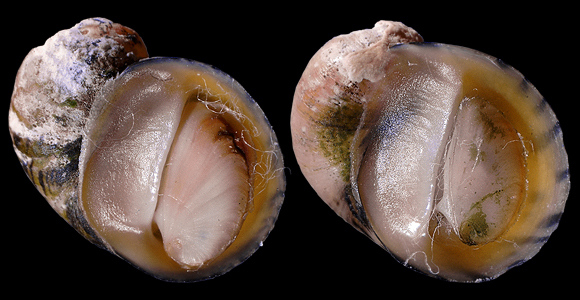
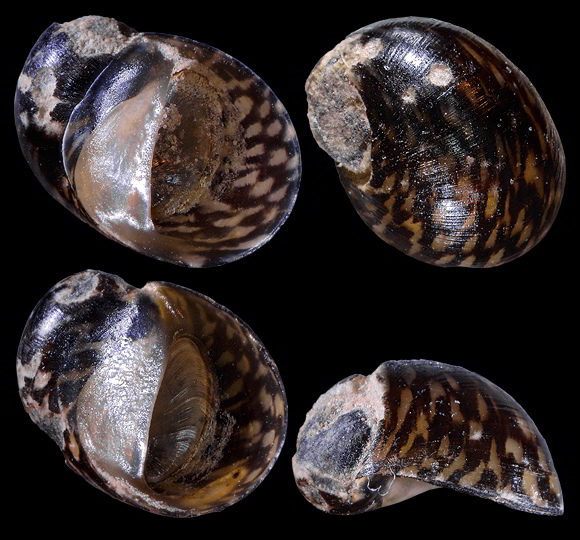
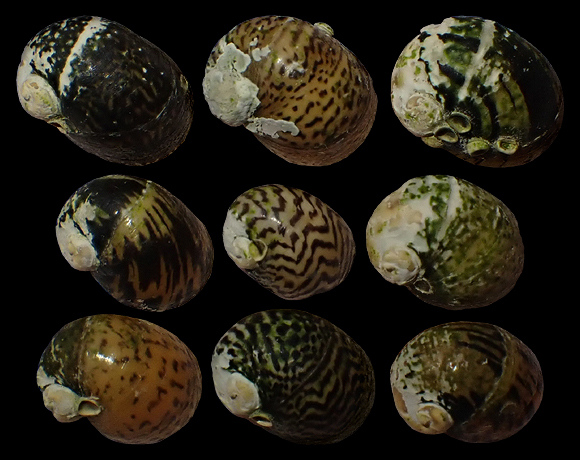
Original pictures provided by R. Crnković (HR).
– (CC BY-NC-SA) –
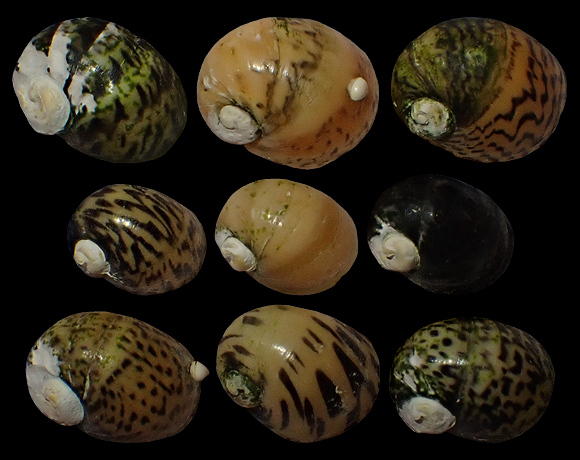
Original pictures provided by R. Crnković (HR).
– (CC BY-NC-SA) –
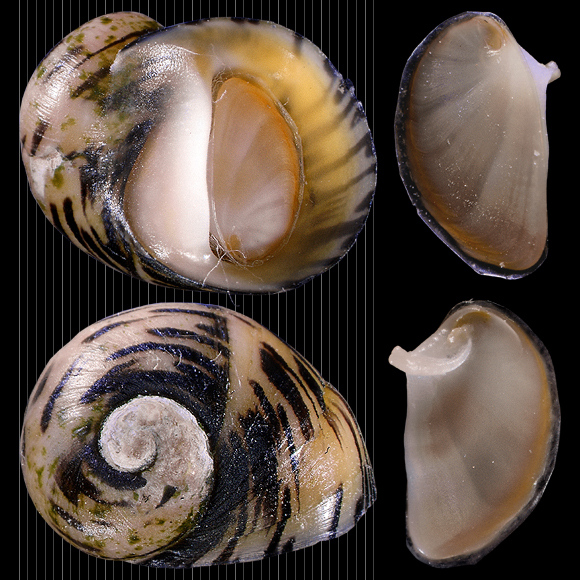
The Cetina is the only river in the adriatic flank of Croatia where, to our knowledge, Th. danubialis is found. Since the sea level rose up of about 130m since the last glacial maximum (circa 20k years ago), and invaded the lower valley of the Po, forming the present Adriatic Sea, the Cetina is now disconnected from northern tributaries in Italy where other danubialis are living. If this dalmatian population came from that of the Po basin, it can no longer share its genes with the other padan groups via larval spreading.
For the recent sea-level variations, cf. Murray-Wallace & Woodroffe, 2014: “Pleistocene sea-level changes”, in Quaternary Sea-Level Changes A Global Perspective, Cambridge University Press 2014, p.256-319.
For the recent sea-level variations, cf. Murray-Wallace & Woodroffe, 2014: “Pleistocene sea-level changes”, in Quaternary Sea-Level Changes A Global Perspective, Cambridge University Press 2014, p.256-319.
Ruda spring. 8,3mm.
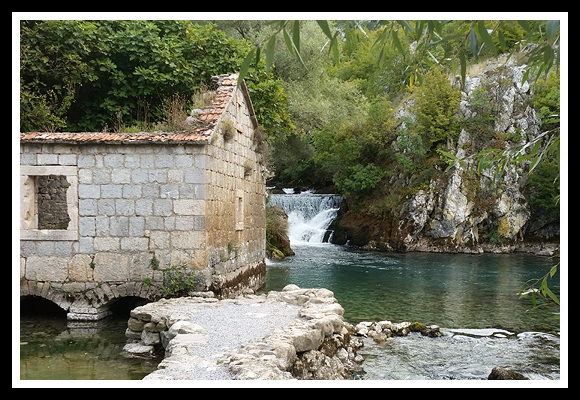
Original picture provided by R. Crnković (HR).
– (CC BY-NC-SA) –
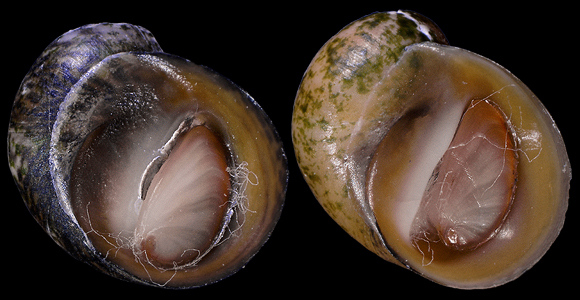
A phylogenetic analysis of 3 specimens sampled in the Cetina, and of all those of Theodoxus available in GenBank led to this pattern: the 3 snails of the Cetina are genetically midway between the group of the Po basin and the group of the Donau area. This means firstly that the snails from Cetina belong actually to danubialis.
Second point: if the population of the Cetina came there from the Po basin, it could hardly be genetically separated from the population of the Donau by the same “distance” that separates it from the padan population. The snails of the Cetina may not belong to the padan group, and have probably not been isolated from the latter by the end of the last ice-age.
Second point: if the population of the Cetina came there from the Po basin, it could hardly be genetically separated from the population of the Donau by the same “distance” that separates it from the padan population. The snails of the Cetina may not belong to the padan group, and have probably not been isolated from the latter by the end of the last ice-age.
Same spot. 9,2-9,4mm.
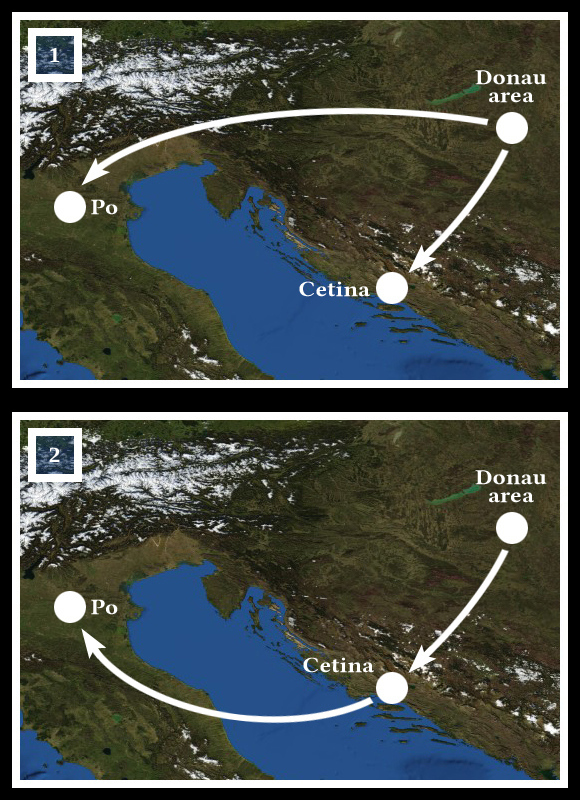
Two better possibilities remain: 1- the padan and dalmatian groups are directly derived from that of the Donau area. 2- the padan population comes from that of the Cetina river, which itself comes from the group living in the Donau area… Nota bene that we are not talking about ancestors here, but about relay (or booster) stations… And a question remains: why danubialis is not present in other dalmatian rivers, such as the Zrmanja, the Krka, Jadro etc.?
Original layer of the map provided by Reto Stöckli, NASA Earth Observatory, december 2004.

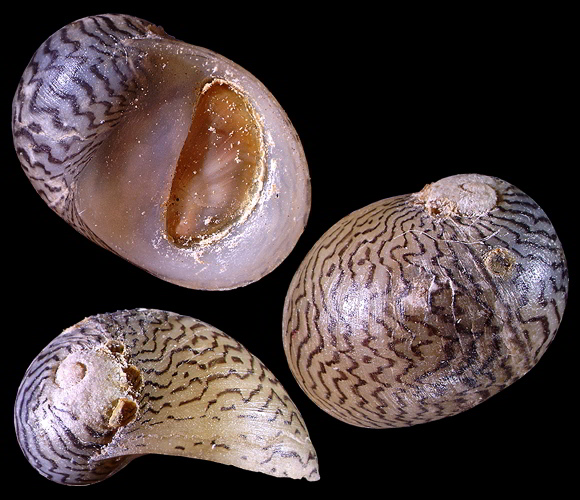

Morphological convergences: here is is a striped variant of the Neritina callosa Deshayes, 1835 (synonym of Th. baeticus). This population inhabits the shore of Trichonida Lake, Aetolia-Acarnania, W. Greece. Here, a specimen of 7,6mm.